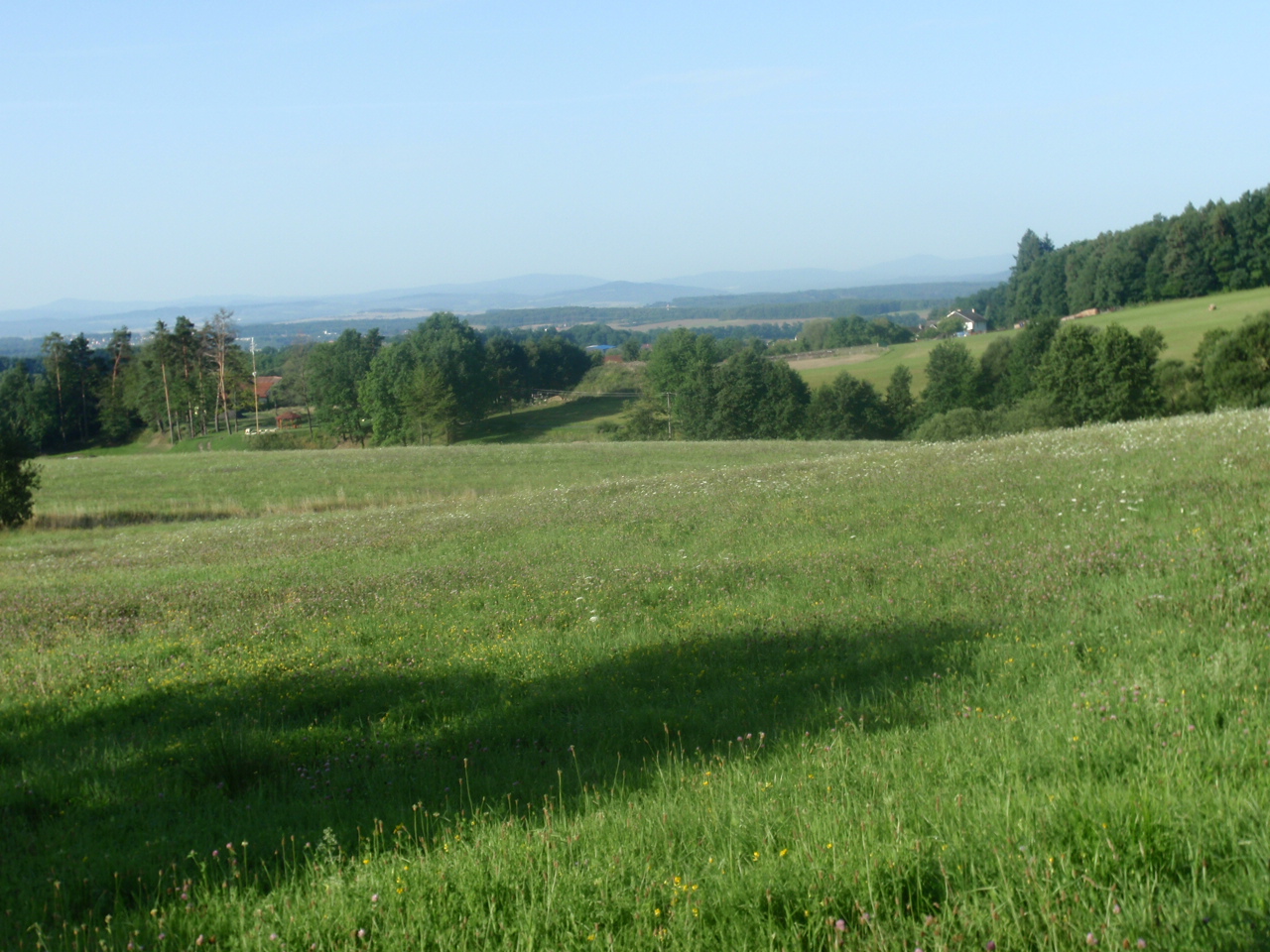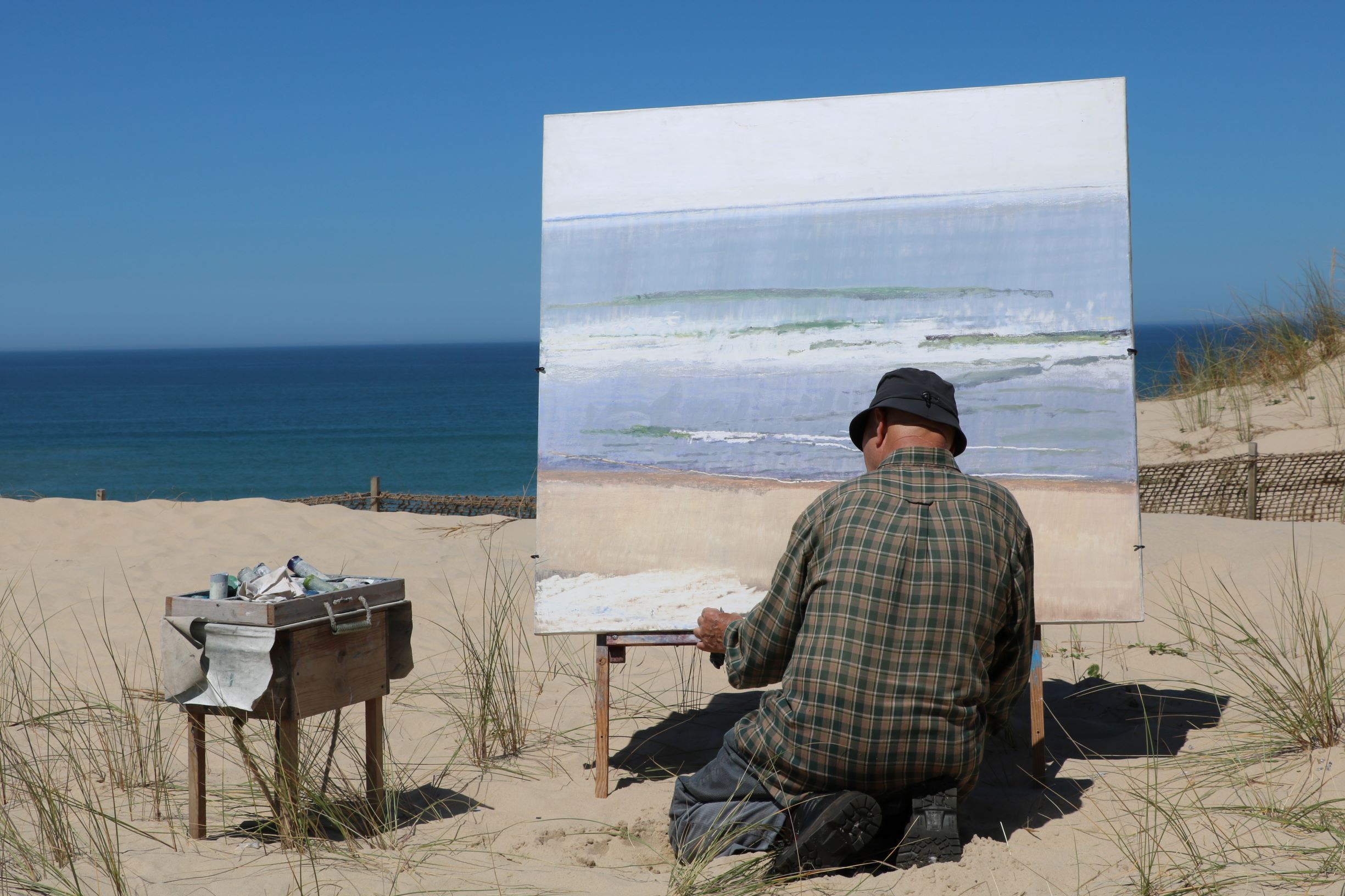|
Marion Wachtel
Marion Kavanaugh Wachtel (June 10, 1873/77 – May 22, 1954) was an American plein air painter in watercolors and oils. She lived and worked with her artist husband Elmer Wachtel in the Arroyo Seco near Pasadena, California, in the early 20th century. Early life Marion Kavanagh was born in Milwaukee, Wisconsin to James Kavanagh and Jean Jo Auston Kavanagh. Her English mother and Irish grandfather were also painters. Career She trained at the Art Institute of Chicago, and under William Merritt Chase in New York. She was a member of the New York Watercolor Club. Later, she taught in public schools and at the Art Institute of Chicago. In 1903 she journeyed to California, where she studied under William Keith, and Elmer Wachtel, whom she married in 1904. She painted primarily figures and portraits in the east and then changed to landscapes of the dramatic Californian and Southwestern terrain. Her medium of choice was watercolor, but she began painting in oils after her hus ... [...More Info...] [...Related Items...] OR: [Wikipedia] [Google] [Baidu] |
Pasadena, California
Pasadena ( ) is a city in Los Angeles County, California, northeast of downtown Los Angeles. It is the most populous city and the primary cultural center of the San Gabriel Valley. Old Pasadena is the city's original commercial district. Its population was 138,699 at the 2020 census, making it the 44th largest city in California and the ninth-largest city in Los Angeles County. Pasadena was incorporated on June 19, 1886, becoming one of the first cities to be incorporated in what is now Los Angeles County, following the city of Los Angeles (April 4, 1850). Pasadena is known for hosting the annual Rose Bowl football game and Tournament of Roses Parade. It is also home to many scientific, educational, and cultural institutions, including Caltech, Pasadena City College, Kaiser Permanente Bernard J. Tyson School of Medicine, Fuller Theological Seminary, ArtCenter College of Design, the Pasadena Playhouse, the Ambassador Auditorium, the Norton Simon Museum, and the USC ... [...More Info...] [...Related Items...] OR: [Wikipedia] [Google] [Baidu] |
Landscape
A landscape is the visible features of an area of land, its landforms, and how they integrate with natural or man-made features, often considered in terms of their aesthetic appeal.''New Oxford American Dictionary''. A landscape includes the physical elements of geophysically defined landforms such as (ice-capped) mountains, hills, water bodies such as rivers, lakes, ponds and the sea, living elements of land cover including indigenous vegetation, human elements including different forms of land use, buildings, and structures, and transitory elements such as lighting and weather conditions. Combining both their physical origins and the cultural overlay of human presence, often created over millennia, landscapes reflect a living synthesis of people and place that is vital to local and national identity. The character of a landscape helps define the self-image of the people who inhabit it and a sense of place that differentiates one region from other regions. It is t ... [...More Info...] [...Related Items...] OR: [Wikipedia] [Google] [Baidu] |
19th-century American Painters
The 19th (nineteenth) century began on 1 January 1801 ( MDCCCI), and ended on 31 December 1900 ( MCM). The 19th century was the ninth century of the 2nd millennium. The 19th century was characterized by vast social upheaval. Slavery was abolished in much of Europe and the Americas. The First Industrial Revolution, though it began in the late 18th century, expanding beyond its British homeland for the first time during this century, particularly remaking the economies and societies of the Low Countries, the Rhineland, Northern Italy, and the Northeastern United States. A few decades later, the Second Industrial Revolution led to ever more massive urbanization and much higher levels of productivity, profit, and prosperity, a pattern that continued into the 20th century. The Islamic gunpowder empires fell into decline and European imperialism brought much of South Asia, Southeast Asia, and almost all of Africa under colonial rule. It was also marked by the collapse of the l ... [...More Info...] [...Related Items...] OR: [Wikipedia] [Google] [Baidu] |
Painters From California
Painting is the practice of applying paint, pigment, color or other medium to a solid surface (called the "matrix" or "support"). The medium is commonly applied to the base with a brush, but other implements, such as knives, sponges, and airbrushes, can be used. In art, the term ''painting ''describes both the act and the result of the action (the final work is called "a painting"). The support for paintings includes such surfaces as walls, paper, canvas, wood, glass, lacquer, pottery, leaf, copper and concrete, and the painting may incorporate multiple other materials, including sand, clay, paper, plaster, gold leaf, and even whole objects. Painting is an important form in the visual arts, bringing in elements such as drawing, composition, gesture (as in gestural painting), narration (as in narrative art), and abstraction (as in abstract art). Paintings can be naturalistic and representational (as in still life and landscape painting), photographic, abstract, narra ... [...More Info...] [...Related Items...] OR: [Wikipedia] [Google] [Baidu] |
1954 Deaths
Events January * January 1 – The Soviet Union ceases to demand war reparations from West Germany. * January 3 – The Italian broadcaster RAI officially begins transmitting. * January 7 – Georgetown-IBM experiment: The first public demonstration of a machine translation system is held in New York, at the head office of IBM. * January 10 – BOAC Flight 781, a de Havilland Comet jet plane, disintegrates in mid-air due to metal fatigue, and crashes in the Mediterranean near Elba; all 35 people on board are killed. * January 12 – Avalanches in Austria kill more than 200. * January 15 – Mau Mau leader Waruhiu Itote is captured in Kenya. * January 17 – In Yugoslavia, Milovan Đilas, one of the leading members of the League of Communists of Yugoslavia, is relieved of his duties. * January 20 – The US-based National Negro Network is established, with 46 member radio stations. * January 21 – The first nuclear-pow ... [...More Info...] [...Related Items...] OR: [Wikipedia] [Google] [Baidu] |
1875 Births
Events January–March * January 1 – The Midland Railway of England abolishes the Second Class passenger category, leaving First Class and Third Class. Other British railway companies follow Midland's lead during the rest of the year (Third Class is renamed Second Class in 1956). * January 5 – The Palais Garnier, one of the most famous opera houses in the world, is inaugurated in Paris. * January 12 – Guangxu Emperor, Guangxu becomes the 11th Qing Dynasty Emperor of China at the age of 3, in succession to his cousin. * January 14 – The newly proclaimed King Alfonso XII of Spain (Queen Isabella II's son) arrives in Spain to restore the monarchy during the Third Carlist War. * February 3 – Third Carlist War – Battle of Lácar: Carlist commander Torcuato Mendiri, Torcuato Mendíri secures a brilliant victory, when he surprises and routs a Government force under General Enrique Bargés at Lácar, east of Estella, nearly capturing newly cr ... [...More Info...] [...Related Items...] OR: [Wikipedia] [Google] [Baidu] |
American Impressionist Painters
American(s) may refer to: * American, something of, from, or related to the United States of America, commonly known as the "United States" or "America" ** Americans, citizens and nationals of the United States of America ** American ancestry, people who self-identify their ancestry as "American" ** American English, the set of varieties of the English language native to the United States ** Native Americans in the United States, indigenous peoples of the United States * American, something of, from, or related to the Americas, also known as "America" ** Indigenous peoples of the Americas * American (word), for analysis and history of the meanings in various contexts Organizations * American Airlines, U.S.-based airline headquartered in Fort Worth, Texas * American Athletic Conference, an American college athletic conference * American Recordings (record label), a record label previously known as Def American * American University, in Washington, D.C. Sports teams Soccer ... [...More Info...] [...Related Items...] OR: [Wikipedia] [Google] [Baidu] |
En Plein Air
''En plein air'' (; French for 'outdoors'), or ''plein air'' painting, is the act of painting outdoors. This method contrasts with studio painting or academic rules that might create a predetermined look. The theory of 'En plein air' painting is credited to Pierre-Henri de Valenciennes (1750–1819), first expounded in a treatise entitled ''Reflections and Advice to a Student on Painting, Particularly on Landscape'' (1800), where he developed the concept of landscape portraiture by which the artist paints directly onto canvas ''in situ'' within the landscape. It enabled the artist to better capture the changing details of weather and light. The invention of portable canvases and easels allowed the practice to develop, particularly in France, and in the early 1830s the Barbizon school of painting in natural light was highly influential. Amongst the most prominent features of this school were its tonal qualities, colour, loose brushwork, and softness of form. These were variants ... [...More Info...] [...Related Items...] OR: [Wikipedia] [Google] [Baidu] |
Saint Mary's College Of California
Saint Mary's College of California is a private Catholic college in Moraga, California. Established in 1863, it is affiliated with the Catholic Church and administered by the De La Salle Brothers. The college offers undergraduate and graduate programs with a total student count at under 4,000 . History St. Mary's College began in 1863 as a diocesan college for boys established by the Most Rev. Joseph Alemany, a member of the Dominicans and the first archbishop of San Francisco. One of its first donors was Mary Ellen Pleasant, a famed Black Catholic philanthropist who gave the school roughly $10,000 in today's money to help get the school off the ground. Unhappy with the archdiocese's operation of the college, Archbishop Alemany applied for assistance from Rome and in 1868 St. Mary's College was handed over to the De La Salle Christian Brothers. In 1889, the college moved east across San Francisco Bay to Oakland, California. The location on the corner of 30th and Broadway ... [...More Info...] [...Related Items...] OR: [Wikipedia] [Google] [Baidu] |
Annie Harmon
Annie Lyle Harmon (February 1855 – August 27, 1930) was a Californian plein-air artist known especially for her paintings of trees. A student of leading landscape artist William Keith (1838–1911), Harmon, along with several other artists, was a fixture in Keith's studio for many years. Early life Annie Harmon was the daughter of Samuel H. Harmon, a lumber merchant who had come to San Francisco from Maine via Cape Horn in 1849, and his wife Mary Palmer Harmon. She grew up in prosperous circumstances that allowed her access to the city's small cultural society. Her brother Edward married William Keith's only daughter. Education Along with William Keith, Harmon studied with Raymond Dabb Yelland (1848–1900), an English-born landscape artist who taught students in Oakland. Career She began working in William Keith's studio in the early 1880s; the works she exhibited in her first show in 1885 centered on images of the California hills in emulation of her teacher's style. Th ... [...More Info...] [...Related Items...] OR: [Wikipedia] [Google] [Baidu] |








